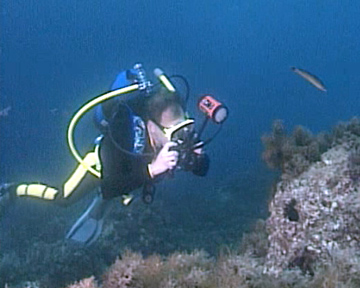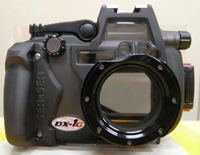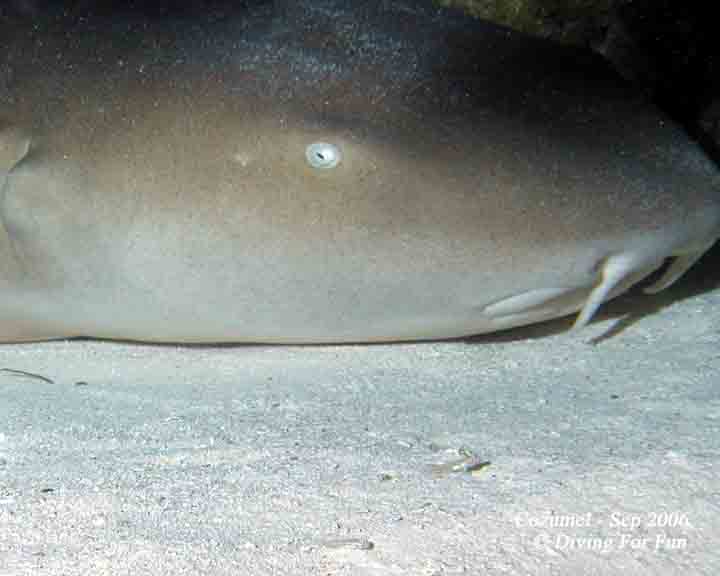
|
|
|
|
|
|
|
 |
|
 |
|
|
|
|
Our site is 256 bit SSL SECURED. SSL (Secure Socket Layer) is the industry standard for viewing and sending sensitive information
on an internet browser. Click on the SSL image below see our site report.
|

|
|
|
 |
|
 |
|
|

|
 |
|
 |
|
|
|
|
As of January 1, 2017, DIVING FOR FUN will
NO LONGER be offering training services. However, we wanted to continue to provide
a list of the classes we offered along with course outlines as a reference for all our past customers.
 Course Overview:
This course will help you learn how to take your fist underwater photographs or fine tune
your existing skills to produce photographs that will stun your friends. Course Overview:
This course will help you learn how to take your fist underwater photographs or fine tune
your existing skills to produce photographs that will stun your friends.
Prerequisites:
Must be at least 10 years old and certified as a Junior Open Water Diver or an Open Water
Diver or have a qualifying certification from another training organization.
 Course Activities:
You will learn about the planning, organization, procedures, techniques, problems and hazards of
underwater-photography diving, photographic principles, composition, film types, flash photography,
available light photography, camera-handling techniques, and care and maintenance of photographic
equipment. You will get to use your new knowledge during the 2 dives performed under the supervision
of an instructor. Before each dive, the instructor will brief the dive, you will then dive the dive
and after each dive, the instructor will debrief the dive. Course Activities:
You will learn about the planning, organization, procedures, techniques, problems and hazards of
underwater-photography diving, photographic principles, composition, film types, flash photography,
available light photography, camera-handling techniques, and care and maintenance of photographic
equipment. You will get to use your new knowledge during the 2 dives performed under the supervision
of an instructor. Before each dive, the instructor will brief the dive, you will then dive the dive
and after each dive, the instructor will debrief the dive.
- Classroom: There are one classroom session. The classroom session will cover
each of the chapters, review your knowledge review answers and prepare you for the open
water dives.
- Independent Study: Read the Underwater Photography Specialty manual and
complete Knowledge Reviews parts I and II. You will need to turn in the knowledge reviews prior to certification.
- Open Water Dives: The 2 open water dives are done at an area lake/scuba park
or on a dive trip.
 Forms Required:
Students training will need to complete the three (3) forms: Liability Release, Statement of Understanding, and
Medical Statement prior to entering the water. Forms Required:
Students training will need to complete the three (3) forms: Liability Release, Statement of Understanding, and
Medical Statement prior to entering the water.
Materials/Equipment Required:
Underwater Digital Photography Specialty Manual and White Balance Slate (included in course price). Recommended: Underwater Digital Photography Specialty DVD
 Length of Course:
If you have read the Underwater Digital Photography Specialty Manual, completed the knowledge reviews and watched the entire video prior to coming to class then the
classroom will last approximately 1 hour depending upon class size. Length of Course:
If you have read the Underwater Digital Photography Specialty Manual, completed the knowledge reviews and watched the entire video prior to coming to class then the
classroom will last approximately 1 hour depending upon class size.
Related Specialties:
Project AWARE,
Boat Diver,
Coral Reef Conservation,
Deep Diver,
Drift Diver,
Dry Suit Diver,
Enriched Air (Nitrox),
Equipment Specialist,
Fish ID,
Multi-Level Diver,
Night Diver,
Peak Performance Buoyancy,
UW Naturalist,
UW Navigation,
UW Digital Photo,
UW Photo,
UW Search & Recovery,
Wreck Diver.
|
Dive 1:
- Prepare and assemble an underwater camera system.
- If appropriate, set the shutter speed and aperture for an exposure based on manual meter readings, general film
exposure information or automatic programming information.
- Focus the camera by varying subject-to-camera distance or focus know setting.
- Frame and expose a complete roll of film, if appropriate, taking underwater still-life pictures.
- Bracket the exposure of each type of photo taken underwater by varying either shutter speeds or f/stops (if appropriate).
- Compose each still life applying basic considerations such as flash angle, camera angle, subject position,
image completeness, foreground, background and complementary colors.
Dive 2:
- Prepare and assemble an underwater camera system.
- If appropriate, set the shutter speed and aperture for an exposure based on manual meter readings, general film
exposure information or automatic programming information.
- Focus the camera by varying subject-to-camera distance or focus know setting.
- Frame and expose a complete roll of film, if appropriate, taking diver pictures.
- Bracket the exposure of each type of photo taken underwater by varying either shutter speeds or f/stops (if appropriate).
- Compose each diver photo applying basic considerations such as flash angle, camera angle, subject position,
image completeness, foreground, background and complementary colors.
|
 |
If you need additional information or have questions,
we can be reached at our Contact Us page or visit our
Sign Up page.
|
 |
|
|
|
|
|
 |
|
 |
|

|